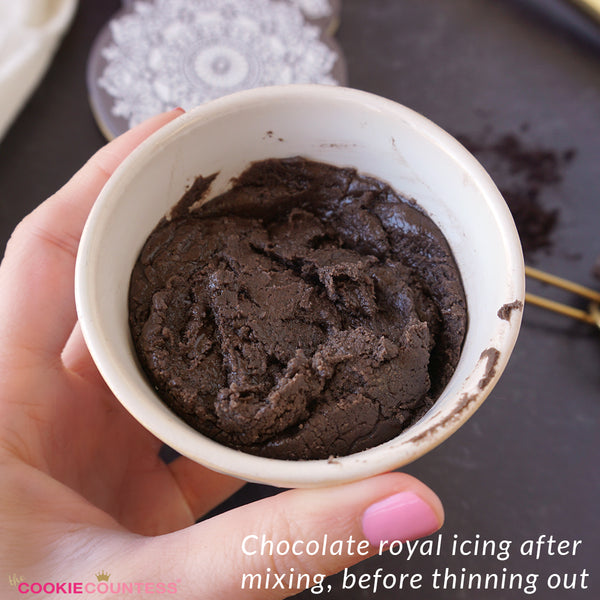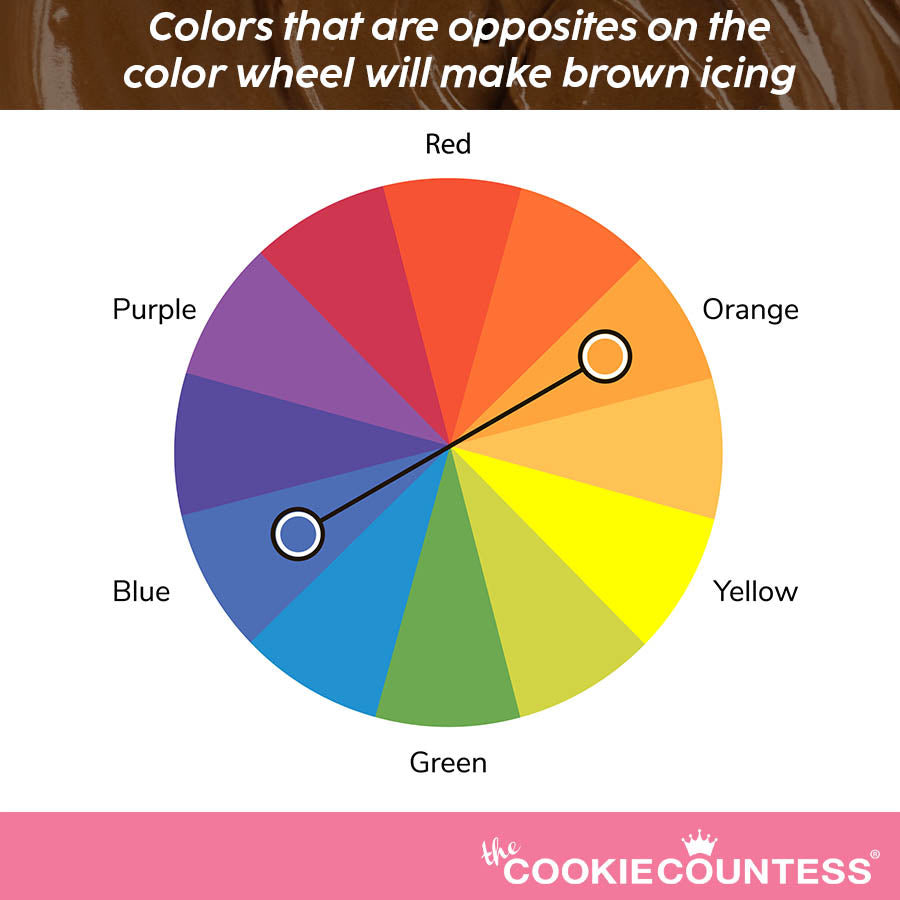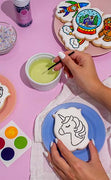
How to Make Brown Icing without Brown Food Color
You need to make brown icing, but you don't have brown food color! Don't fret, we have recipes to make brown frosting even if you don't have a drop of food coloring in the house.
There are many ways to make brown royal icing. Even without brown gel food color, we can use other ingredients or other colors to achieve the shade of brown we need.
How to Make Brown Icing with Cocoa Powder
For starters we could add a little cocoa powder to our royal icing to make it brown. Depending on the brand of cocoa powder, the type and the amount we use, we will get a variety of brown shades including tan and darker colors.
There are different types of cocoa powder: regular and Dutch processed cocoa. Both are usually unsweetened. Regular Cocoa Powder is a lighter brown than Dutch Processed Cocoa, because Dutch cocoa has been alkalized and is less acidic than regular cocoa powder.
Cocoa Powder Brown Chocolate Icing Recipe
- To every 1 cup of white icing, add 1 tablespoon of the darkest unsweetened cocoa powder you can find.
- Mix well. This will result in a very still icing.
- Add warm water by 1 drop at a time, mixing after each addition, until you get your desired consistency.

How to Make Brown Icing with Food Colors
If we happen to be out of cocoa and brown gel food color at the same time, it is possible to mix the colors that we already have and make the shade of brown that we need.
To start making our shades of brown we need to understand the color wheel. In the theory of color, brown is achieved by mixing equal amounts of complementary colors.
If we talk about the color wheel, we start by the primary colors which are yellow, blue and red. After those come the secondary colors. These colors are made by combining the first ones. Yellow and blue will make green, blue and red will make purple and red and yellow will make orange. By arranging these colors on a basic color wheel, we will have yellow and purple, blue and orange, and red and green as complementary colors. This means that they are opposite from each other on the color wheel.

Using the exact same number of drops of each of these combinations you’ll get a shade of brown. By altering the number of drops used of each of the color you’ll get darker or lighter colors.
Brown Icing with Food Color Mixing Chart
If using our gel color set, we recommend a mix of Royal Red Velvet and Gourmet Green, but there are other color combinations that will result in browns. See the chart below.

All these combinations will leave you with earthy tones.
To get an even deeper shade of brown, we recommend adding a little of the primary color opposite to the complementary combination. For example:
Red (Royal Red Velvet) + Green (Gourmet Green) + Yellow (Sunshine Yellow)
Red (Royal Red Velvet) + Green (Gourmet Green) + Blue (True Blue)
Blue (True Blue) + Orange (Outrageously Orange) + Red (Royal Red Velvet)
Blue (True Blue) + Orange (Outrageously Orange) + Yellow (Sunshine Yellow)
Yellow (Sunshine Yellow) + Purple (Positively Purple) + Red (Royal Red Velvet)
Yellow (Sunshine Yellow) + Purple (Positively Purple) + Blue (True Blue)
It is also recommended to use different shades of the colors to obtain even more variations of brown shades. Adding Brick Red gel food color instead of Royal Red Velvet for example, or using the other shades of green we carry (Succulent Green, Forest Green) instead of Gourmet Green, Ultra Blue or Mermaid Teal instead of True Blue will make a variation of the previous combinations.
Find all our Gel Icing Colors (including two beautiful shades of brown) here.
Recommended for You:
Piping Bag Tip Tube Covers - Set of 4
AtecoDon't let your icing bags leak or dry out! Use these covers on bags with Ateco couplers and standard tips on them. Reuse them again and again. Se...
View full detailsBlack Fine Tip Food Marker
The Cookie CountessA black edible-ink pen is essential for your decorating kit. Use these high quality markers for: Marking up baked cookies for planning designs Wr...
View full detailsStainless Steel Measuring Cups 4 Piece Set
The Cookie CountessIncredibly high quality, with no plastic parts. Whether baking or cooking you'll reach for these essentials again and again! THESE ARE THE LAST SET...
View full detailsCookie Order Form 5 x 7, 50 sheets
The Cookie CountessThese cute sheets will help you plan your cookie orders. The back has an area for sketching and pricing planning. Size: 5" x 7" 50 Sheet Pad Doub...
View full details-

Introducing the Cookie Countess Cookie Capsule Collection!
Read nowTired of using boring clear bags as packaging for your beautiful decorated cookies? Or maybe you’ve been looking for a more protective way to package them that is just as pretty as the cookies themselves? Well, look no further than...
-

Stamped Jack-o-Lantern Cookies: an Easy Halloween Treat
Read nowSo you want to make Halloween cookies, but you don't really feel like making or using royal icing? Well, do we have the design for you! Look no further than the Cookie Countess Jack-O-Lantern cutter and stamps set to help...
-

Make and Decorate Easy Mini Jack-o-Lantern Cookies
Read nowHalloween is one of the biggest cookie holidays of the year, and I personally think that can be chalked up to the sheer number of fun/spooky/adorable/creepy designs this holiday lends itself to! Let's look at one of the most basic--Jack-o-Lanterns!...














Comments
Leave a comment